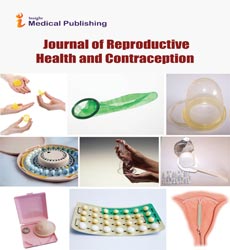Social Dimensions of Contraceptive Decision
Axelson Agho
Department of Reproductive Research, University of Toronto, Toronto, Canada
Published Date: 2025-01-31DOI10.21767/2471-9749.2025.10.1.02
*Corresponding author:
Axelson Agho
Department of Reproductive Research, University of Toronto, Toronto, Canada
Email: aghoslexa.son@ae.ca
Received: January 01, 2025, Manuscript No. ipjcs-25-20496; Editor assigned: January 03, 2025, PreQC No. ipjcs-25-20496; Reviewed: January 17, 2025, QC No. ipjcs-25-20496; Revised: January 22, 2025, R No. ipjcs-25-20496; Published: January 31, 2025, DOI: 10.21767/2471-9749.2025.10.1.02
Citation: Agho A (2025) Social Dimensions of Contraceptive Decision. J Reproduct Health Contracept Vol: 10 No: 1: 02.
Introduction
The emergence of precision medicine has revolutionized the landscape of modern healthcare by moving away from a â??one-size-fits-allâ? approach toward individualized treatment strategies tailored to a personâ??s genetic, epigenetic, environmental, and lifestyle factors. While oncology and pharmacogenomics have been the early beneficiaries of precision medicine, its integration into reproductive health and contraception remains an evolving but highly promising frontier. Reproductive health encompasses fertility, pregnancy, maternal well-being, and contraception-domains that are profoundly influenced by interindividual variability in genetics, hormonal physiology, metabolism, and environmental exposures. Traditional contraceptive methods and reproductive healthcare practices often assume biological homogeneity; however, substantial variability exists in the efficacy, safety, and acceptability of these interventions across populations. Integrating precision medicine into reproductive health aims to address these gaps by enabling more tailored contraceptive strategies, improved fertility planning, and enhanced reproductive care across the lifespan [1].
Description
Reproductive health outcomes are influenced by a confluence of genetic, endocrine, immunologic, behavioral, and sociocultural determinants. For instance, the variability in menstrual cycles, ovulatory function, fertility potential, and response to hormonal contraception reflects the heterogeneity of human biology. Conventional contraceptive strategies-whether oral contraceptives, intrauterine devices, implants, or barrier methods-were developed on population-level efficacy data without accounting for interindividual metabolic or genetic variability. Consequently, side effects such as venous thromboembolism, mood disturbances, or altered menstrual bleeding patterns disproportionately affect certain women, leading to poor adherence and discontinuation. While precision medicine promises individualized reproductive health, it also risks exacerbating existing inequities if access remains limited to affluent populations [2].
Environmental exposures such as endocrine-disrupting chemicals, nutrition, and stress further modify reproductive epigenetics, influencing fertility and pregnancy outcomes. In the context of contraception, epigenetic regulation may shape individual responses to synthetic hormones or even natural fertility cycles. For example, differential methylation of estrogen receptor genes can alter sensitivity to estrogen-based contraceptives. Precision medicine approaches integrating epigenomic profiling could identify women who are more likely to develop side effects, irregular bleeding, or contraceptive failure, paving the way for individualized contraceptive regimens [3].
The vaginal, cervical, and gut microbiomes exert profound influence on reproductive health. Lactobacillus-dominant vaginal microbiota supports natural defense against Sexually Transmitted Infections (STIs) and modulates mucosal immunity, while microbial dysbiosis is associated with infertility, pelvic inflammatory disease, and poor pregnancy outcomes. Emerging evidence suggests that the vaginal microbiome may also influence the efficacy and tolerability of certain contraceptive devices, such as copper IUDs, which can alter microbial ecology. Similarly, oral contraceptives may indirectly influence gut microbiome composition, affecting estrogen metabolism and systemic inflammation [4].
The integration of digital health technologies into reproductive medicine offers unprecedented opportunities to personalize care. Mobile health apps, wearable devices, and digital fertility trackers generate real-time data on menstrual cycles, ovulation patterns, sleep, activity, and metabolic status. When coupled with Artificial Intelligence (AI) algorithms, these datasets can predict fertility windows, optimize natural family planning, and guide contraceptive choices tailored to lifestyle and physiology. Furthermore, digital platforms can enable precision counseling, adherence monitoring, and side-effect reporting, reducing discontinuation rates and enhancing patient satisfaction[5].
Conclusion
The integration of reproductive health and contraception into precision medicine represents a paradigm shift toward more effective, safer, and individualized reproductive care. Advances in pharmacogenomics, epigenetics, microbiome research, immunology, and digital health are converging to enable personalized contraceptive strategies tailored to each individualâ??s unique biological and contextual profile. By moving beyond generalized contraceptive prescriptions, precision medicine offers the potential to minimize side effects, improve adherence, and enhance reproductive autonomy. However, realizing this vision requires overcoming challenges related to access, affordability, data integration, and ethical considerations. Global health disparities must be addressed to ensure that precision reproductive medicine does not deepen inequities but rather extends reproductive rights and choices to all women and couples. As the field evolves, interdisciplinary collaboration between geneticists, microbiologists, clinicians, ethicists, and policymakers will be essential.
Acknowledgement
None.
Conflict of Interest
None.
Reference
- Wai MM, Bjertness E, Htay TT, Liabsuetrakul T, Myint ANM, et al. (2020). Dynamics of contraceptive use among married women in North and South Yangon, Myanmar: Findings from a cross-sectional household survey. Contracept 2: 100015.
Google Scholar Cross Ref Indexed at
- Hameed W, Azmat SK, Ali M, Sheikh MI, Abbas G, et al. (2014). Women's empowerment and contraceptive use: the role of independent couples' decision-making, from a lower middle income country perspective. PLoS One, 9: e104633.
Google Scholar Cross Ref Indexed at
- Yigzaw M, Zakus D, Tadesse Y, Desalegn M, Fantahun M (2015). Paving the way for universal family planning coverage in Ethiopia: An analysis of wealth related inequality. Int J Equity Health 14: 77.
Google Scholar Cross Ref Indexed at
- Adebowale SA, Adedini SA, Ibisomi LD, Palamuleni ME (2014). Differential effect of wealth quintile on modern contraceptive use and fertility: Evidence from Malawian women. BMC Women’s Health 14: 40.
Google Scholar Cross Ref Indexed at
- Dessalegn M, Ayele M, Hailu Y, Addisu G, Abebe S, et al. (2020). Gender inequality and the sexual and reproductive health status of young and older women in the Afar Region of Ethiopia. Int J Environ Res Public Health 17: 4592.
Open Access Journals
- Aquaculture & Veterinary Science
- Chemistry & Chemical Sciences
- Clinical Sciences
- Engineering
- General Science
- Genetics & Molecular Biology
- Health Care & Nursing
- Immunology & Microbiology
- Materials Science
- Mathematics & Physics
- Medical Sciences
- Neurology & Psychiatry
- Oncology & Cancer Science
- Pharmaceutical Sciences
